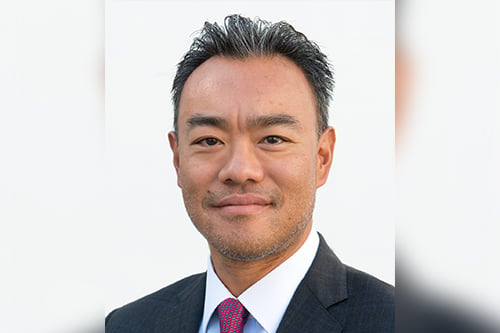

While the debate of whether COVID-19 can be spread through airborne transmission has yet to be fully settled, the pandemic has raised awareness about indoor air quality and its associated risks. These risks will not go away even after the COVID-19 outbreak subsides, and will remain a significant issue businesses must take note of in the future.
Arthur Lu (pictured), head of environmental impairment liability at AGCS, said that these issues will force many risk managers in the real estate industry to revisit their operation and maintenance plans, as well as to review their current liability programs for potential gaps.
This is especially important once the numerous facilities left idle during pandemic business shutdowns are reactivated.
“Two major concerns to watch out for are microbial matter (mold) and legionella,” Lu said. “With mold, the heating ventilation and air conditioning system is generally the pathway and driving force for air movement in buildings. If these systems have been adjusted for increased efficiency or turned off altogether during periods of no or low occupancy, the HVAC system’s performance and ability to maintain temperature, humidity and circulation can be adversely affected. This would increase the chance for mold to proliferate.”
Legionella bacteria, which causes a lung infection known as legionnaire’s disease, is found in stagnant water. CDC data showed that there were around 10,000 reported cases of legionnaire’s disease in the US in 2018, with a fatality rate of almost 10%.
Due to extended disuse, stagnant water could collect in buildings’ HVAC and plumbing systems, and once the buildings’ operations resume, occupants could get exposed to the bacteria.
“In terms of legionella, a large drop in building water use and any interruption in cleaning regimens or maintenance practices, could increase the build-up of bacteria in areas where water is distributed via pipes, tanks and towers,” Lu said.
Diseases acquired from the mold and bacteria in buildings’ HVAC systems can expose the business to liability insurance claims.
Lu said that, unfortunately, these risks are not widely regulated or enforced from a standpoint of established levels in many countries and jurisdictions. Unlike adherence to fire codes, which is subject to regular inspections, the lax enforcement of indoor air quality may lead to risk managers neglecting the issue until it builds to harmful levels and someone files a claim.
“The management and maintenance protocols must be dealt with on a proactive basis, and should be a part of the overall risk management process,” he said. “Well thought out procedures and the adherence to them will ensure the protection of public health.”
Following the pandemic, Lu believes that insurers will pay more attention to these risks and incorporate them further into the underwriting process.
“Coverage for these particular indoor air quality concerns has been available in the environmental insurance market for many years, and they will continue to be available after the pandemic,” he said. “Underwriters will likely take a closer look at these areas, with particular focus on the operations & maintenance plans and loss experience before and after the pandemic period, and how each insured approaches this exposure.”
